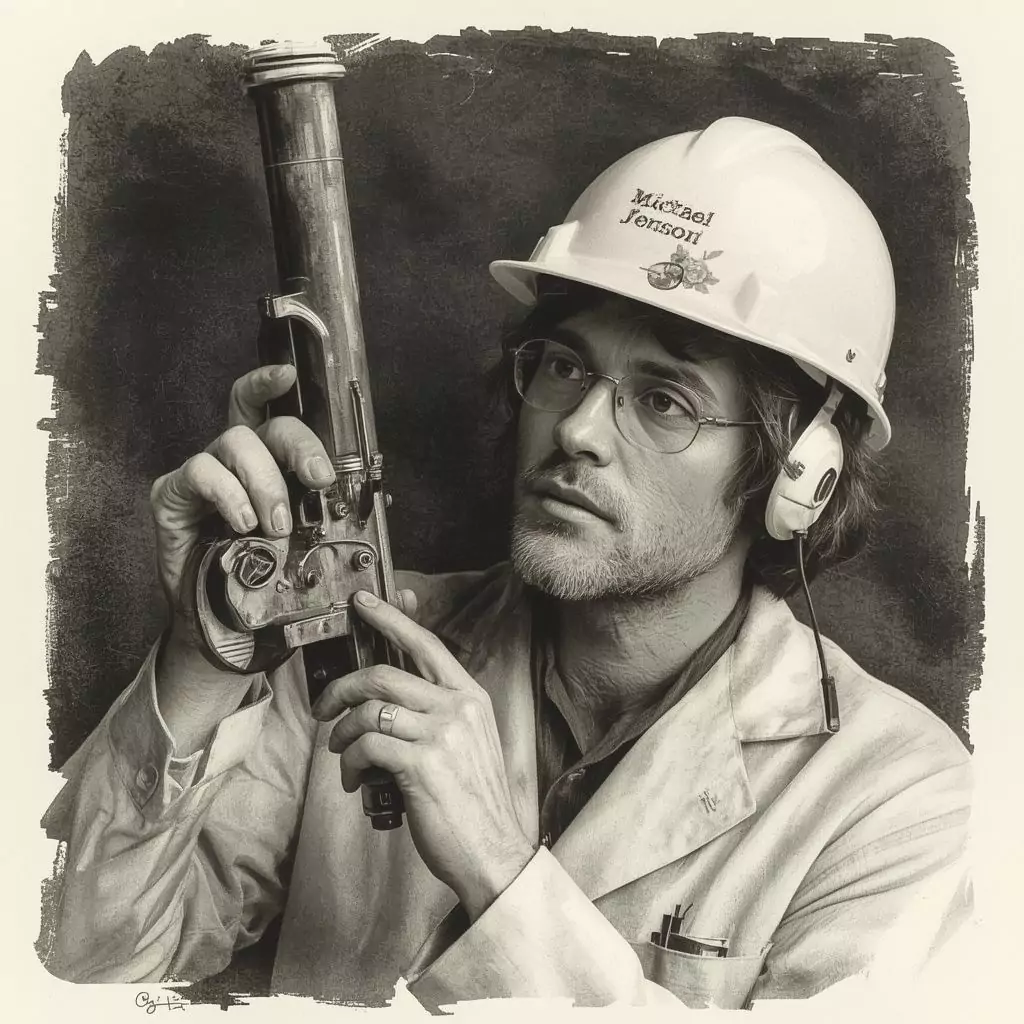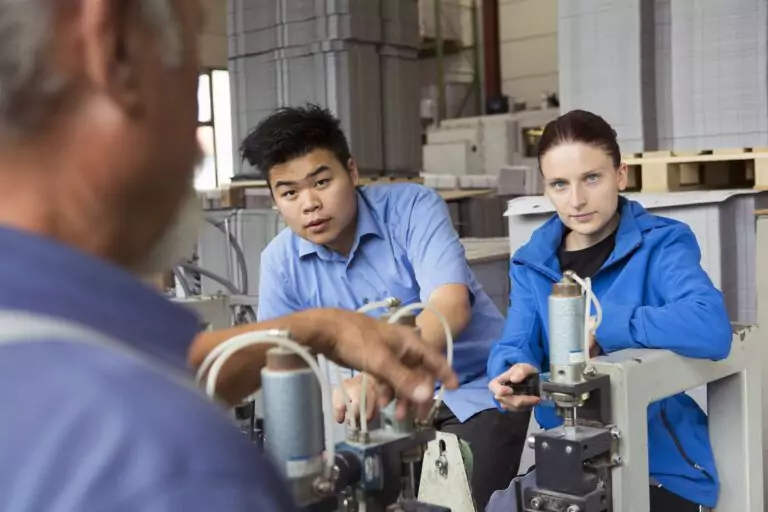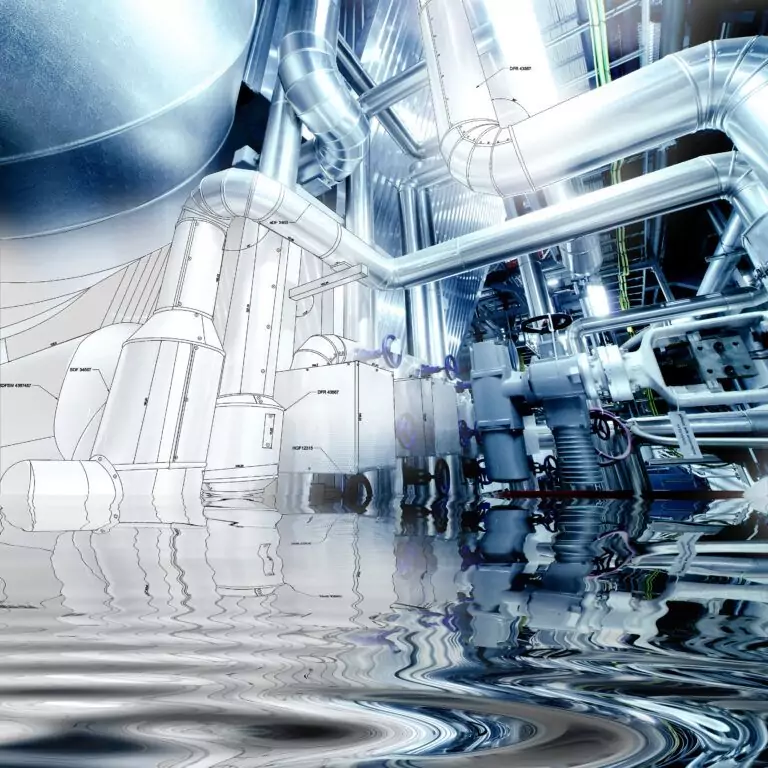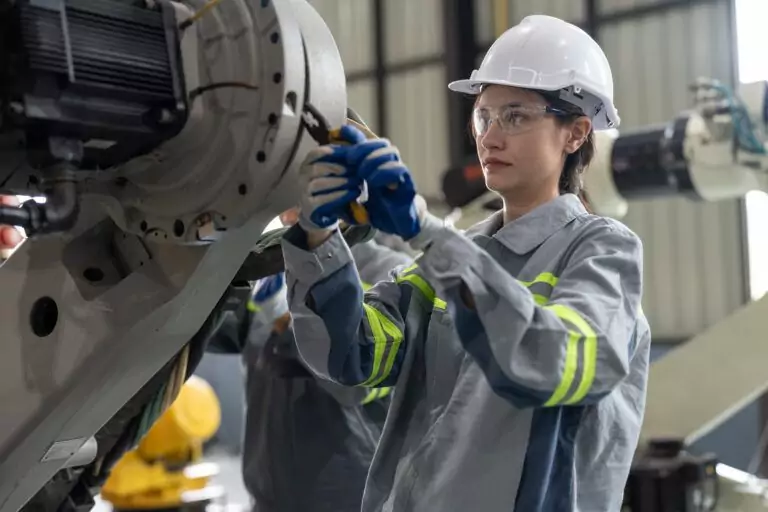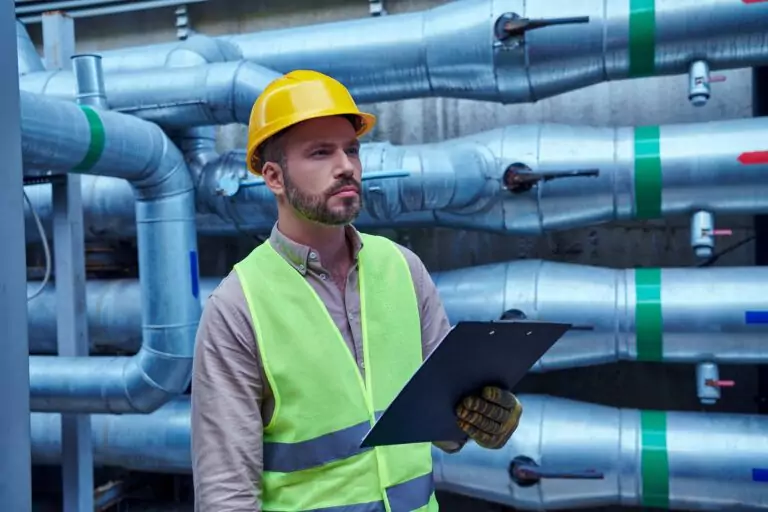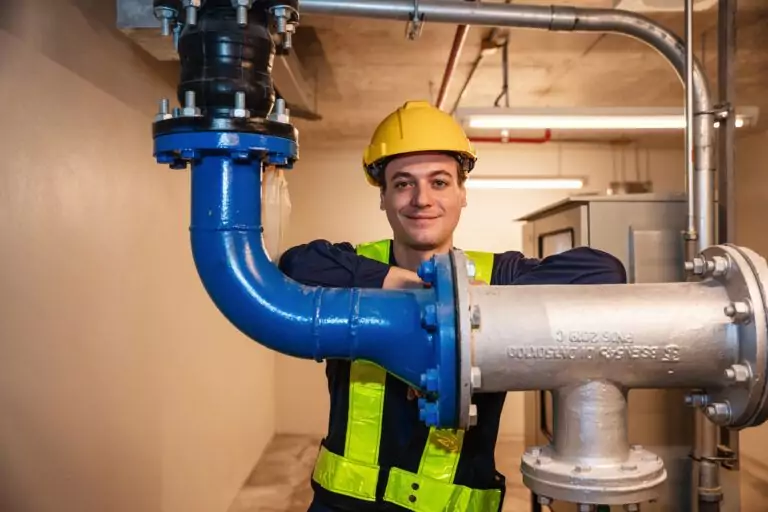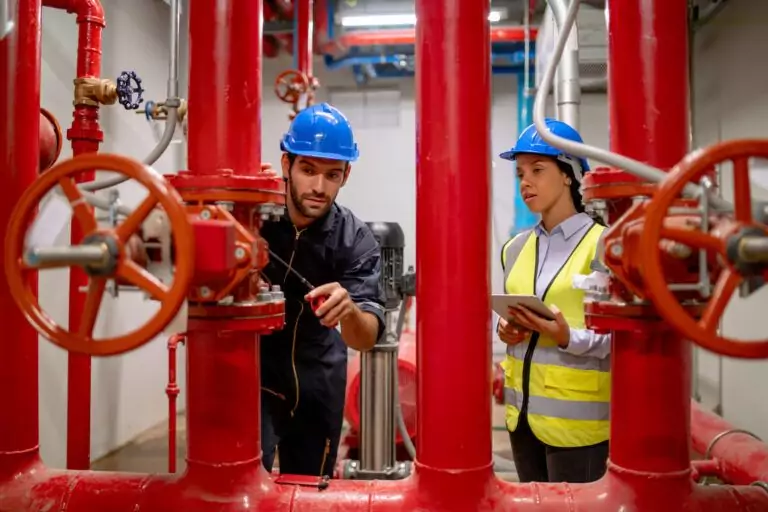What engineering skills do professionals need to succeed? What skills do mechanical engineers need? Successful industrial mechanical engineers master six core skill areas: fundamental technical knowledge (thermodynamics, stress analysis, fluid mechanics), proficiency in industry-standard software platforms (CAD, FEA, and multi-discipline tools), multi-disciplinary coordination abilities, business and cost engineering understanding, industry-specific knowledge for their target sectors, and professional development commitment. The relative importance of each area shifts throughout your career, with technical fundamentals dominating early years and collaboration skills becoming increasingly critical as you advance.
Mechanical engineering skills vary widely depending on where you work. Product development at a consumer goods company requires different capabilities than designing equipment for petrochemical plants. Automotive engineering differs from aerospace. Industrial process plants require yet another skill set. Most engineering students don’t realise how different these paths actually are.
Multi-discipline engineering firms working across energy markets demand broader capabilities and stronger collaborative skills than specialised roles. You’re not just designing parts. You’re coordinating with five other engineering disciplines, understanding project economics, and supporting construction teams in the field.
Vista Projects is a multi-disciplinary engineering firm with offices in Calgary, Vancouver, and international locations. They’ve spent 40 years working across 13 energy markets, including petrochemical, renewable energy, mineral processing, and carbon capture sectors. This experience reveals what actually matters in industrial mechanical engineering: not just technical knowledge, but how you apply it, which platforms matter for real projects, and team collaboration skills that schools rarely teach.
This guide covers the full skill framework. Technical fundamentals that anchor everything. Software platforms you actually need. Multi-disciplinary coordination that separates competent engineers from exceptional ones. Business competencies that technical education often overlooks. Industry knowledge for energy sectors. Professional capabilities supporting advancement.
Disclaimer: Required mechanical engineering skills, software expectations, certification requirements, and career advancement criteria vary significantly by industry sector, company size, project type, and geographic region. All information reflects 2025 industry practices and should be verified with current employers, professional associations, and licensing bodies. Code requirements, certifications, and industry standards change frequently. Individual skill development timelines vary based on educational background, work environment, and professional opportunities.
Fundamental Technical Knowledge You Need
Technical fundamentals form the foundation for everything else. These aren’t academic abstractions; they’re tools you use daily to solve real problems. Thermodynamics isn’t theoretical when you’re sizing a heat exchanger.
Thermodynamics That Actually Matters
The first law of thermodynamics governs energy conservation. The second law addresses entropy and irreversibility. In industrial work, these principles drive equipment sizing, performance analysis, and energy balances for process equipment. Heat engine cycles for power generation. Refrigeration systems for process cooling.
Thermodynamics influences every decision. Boiler sizing. Heat recovery system design. Chiller capacity. Incorrect energy balance calculations result in equipment that won’t meet performance requirements.
Heat transfer mechanisms drive equipment design decisions. Conduction, convection, and radiation for thermal systems and process equipment. You calculate heat transfer rates, size heat exchangers, and specify insulation thickness. Industrial applications convert theoretical principles into operating equipment.
Stress Analysis Fundamentals
Stress-strain relationships determine whether your designs work or fail. Material response to applied loads. Tensile stress from internal pressure. Bending stress from external loads. Shear stress at support connections. Calculate stresses and compare them to material allowables.
Beam theory applies to equipment supports, platforms, and structural members. Simply supported beams versus cantilever beams. Point loads and distributed loads. You use these calculations daily to size structural steel components.
Pressure vessel design combines mechanical principles with industry codes. CSA B51 typically governs vessel design in Canada. Internal pressure creates hoop stress and longitudinal stress. External loads add bending and torsion. Wind loads affect tall vertical vessels. In one reported case, an engineer miscalculated wind loads significantly, resulting in vessel failure during commissioning and substantial repair costs.
Critical Fluid Mechanics Topics
The Bernoulli equation connects pressure, velocity, and elevation. You use this for pump sizing, pressure drop calculations, and flow measurement as a practical design tool.
Pump and compressor selection requires understanding performance curves. How does flow rate affect head? Where’s the best efficiency point? On one project, pumps specified from catalogue data without accounting for the actual system curve ran at approximately 60% efficiency, tripling expected energy costs.
Reynolds number determines the flow regime. Values below 2,300 indicate laminar flow. Above 4,000 indicates turbulent flow. Laminar versus turbulent flow significantly affects heat transfer rates and pressure drops.
Essential Software Platforms for Industrial Work
What software do mechanical engineers use? Industrial mechanical engineers primarily work with AutoCAD for 2D drafting and basic layouts, SolidWorks or Autodesk Inventor for 3D parametric modelling, AVEVA platforms for large, multi-discipline projects, and ANSYS or similar tools for finite element analysis. AVEVA dominates projects exceeding £40 million capital cost due to its database-driven multi-discipline coordination capabilities. Proficiency typically develops over 6-12 months of consistent use, with advanced features requiring 12-18 months of practical experience.
Generic ‘CAD skills’ claims mean little. You need specific platform expertise demonstrated through project work.
CAD Platform Essentials
AutoCAD software remains widely used for 2D drafting, basic 3D modelling, equipment layouts, and fabrication drawings. However, AutoCAD alone isn’t sufficient for large industrial projects once capital costs exceed £40 million.
SolidWorks and Autodesk Inventor excel at complex 3D parametric modelling for equipment and components. Portfolio examples showing actual design projects prove capability better than checkbox claims on CVs.
Bring examples, printed or on a laptop. Discuss design intent, assembly constraints, and your workflow. Proficiency develops through deliberate practice. Expect months of consistent use before genuine productivity emerges.
Industrial Platforms for Multi-Discipline Projects
AVEVA Unified Engineering connects mechanical design with electrical, piping, civil, and instrumentation work through shared 3D environments. These digital engineering environments that integrate mechanical, electrical, and piping design help teams collaborate and detect clashes before construction.
E3D Design places mechanical equipment into complete 3D plant models. You design equipment supports, access platforms, and maintenance clearances. Real-time clash detection catches conflicts before construction, when changes typically cost considerably less to resolve.
Learning these platforms requires commitment. They’re significantly more complex than basic CAD. AVEVA typically takes six months to achieve productivity and a year to feel comfortable. Companies often seek engineers with AVEVA experience, though opportunities to gain that experience can be limited.
Analysis Software Applications
ANSYS and similar FEA tools handle structural analysis beyond hand calculations for complex geometries. Results interpretation matters more than simply running software. Analysis tools can produce incorrect results if improperly used.
Engineers sometimes run simulations and generate stress plots without verifying that the results make physical sense. Understanding principles separates competent analysis from mere software operation.
CFD software analyses fluid flow and heat transfer in complex geometries. Advanced CFD requires specialised training beyond introductory courses.
Multi-Disciplinary Coordination in Industrial Projects
How long does it take to become a proficient mechanical engineer? Timeline to proficiency varies by role complexity: 2-3 years to master technical fundamentals and software platforms, 3-5 years to develop strong multi-disciplinary coordination skills, 5-7 years before leading project teams independently, and 8- 10+ years to achieve senior technical authority. Multi-discipline coordination capabilities often determine career advancement more than pure technical expertise after the first few years. Engineers working in collaborative environments typically develop these skills faster than those in isolated technical roles.
Industrial projects involve multiple engineering disciplines working simultaneously. Project success depends on coordination quality.
Cross-Discipline Coordination Requirements
Electrical engineers specify motors, variable frequency drives, and control panels. You coordinate motor selections, cooling requirements, and maintenance access.
Process engineers define equipment duties, heat transfer rates, operating conditions, and performance specifications. You translate these into mechanical designs. Understanding P&IDs and vendor data sheets becomes essential for extracting needed information from technical documentation.
Piping engineers route process piping throughout facilities. Coordination prevents conflicts requiring expensive rework. Civil and structural engineers design foundations requiring accurate loading information from mechanical engineers.
Instrumentation and control engineers install sensors and field devices for monitoring and control. Temperature sensors. Pressure transmitters. Flow meters. You provide mounting locations, process connections, and maintenance access.
Design Reviews and Clash Detection
Multi-disciplinary design reviews happen regularly. You present mechanical decisions while other disciplines identify potential conflicts. Effective coordination requires understanding competing requirements and finding workable compromises.
3D models enable clash detection using software that identifies physical interferences before construction. In one project, clash detection identified approximately 250 interferences during design. Resolving these issues before construction reportedly avoided substantial field rework costs.
Documentation supports team coordination. Clear design notes, calculation packages, and interface drawings reduce misunderstandings and information requests during construction.
Business Skills That Technical Education Overlooks
Technical skills alone don’t determine career success. Business awareness and project execution understanding significantly affect your value to employers and clients.
Cost Engineering Fundamentals
Every design decision affects project costs. Equipment selection. Material choices. Fabrication details. Understanding cost impacts helps you make informed decisions.
Total installation cost typically includes equipment, materials, fabrication, labour, and construction overhead. While exact distributions vary by project, understanding how your designs impact each component improves decision-making.
Total Cost of Ownership extends beyond installation, typically encompassing 20-30 years of operation. Energy consumption, maintenance requirements, and reliability affect long-term costs. Sometimes spending more initially can reduce lifecycle costs substantially.
Value engineering identifies cost reduction opportunities without compromising performance. When clients request capital cost reductions, engineers must evaluate trade-offs between initial investment and long-term performance.
Client Relationships and Construction Support
Facility owners care about operability, maintainability, and long-term costs. Understanding their operational constraints improves design decisions. Design changes sometimes occur late in projects as operational requirements become clearer.
EPC contractors run large capital projects focused on Engineering, Procurement, and Construction. They emphasise meeting contract requirements within budget and schedule constraints.
Design doesn’t end when drawings are issued. Construction teams have questions. Field conditions often differ from drawings. Engineers who visit construction sites learn to anticipate field challenges and improve their designs accordingly.
RFI responses need a quick turnaround. In one case, delayed engineering responses left construction crews idle, incurring substantial standby costs and prompting personnel changes.
Industry-Specific Technical Knowledge
Mechanical engineering applications differ widely across industrial sectors. Petrochemical plants require different expertise than mineral processing facilities. Understanding industry-specific requirements increases your value.
Process Plant Engineering
Rotating equipment often represents significant portions of major mechanical equipment in process industries. Centrifugal pumps, compressors, and turbines. You specify these machines using vendor data.
Vendor quotes can vary considerably for similar equipment and specifications. Thorough evaluation and negotiation affect project economics.
Pressure vessels contain process fluids from vacuum conditions to pressures often exceeding 20 MPa (3,000 psi). CSA B51 typically governs design in Canada, though code requirements change. Verify current regulations with provincial authorities.
Heat exchangers transfer energy between process streams. Shell-and-tube designs for most applications. Plate-and-frame for specific services. Material selection requires understanding corrosion mechanisms, temperature limits, and pressure capabilities.
Sustainable Energy Systems
Carbon capture facilities compress and process carbon dioxide, often to 15 MPa or higher for pipeline transport. Compression systems require substantial power. Heat recovery improves efficiency.
Renewable energy creates mechanical engineering opportunities. Solar photovoltaic mounting systems. Wind turbine mechanical components. Battery energy storage thermal management. Solar panel mounting structures must withstand substantial wind loads. Wind turbine towers need fatigue analysis for 20+ year service lives.
Energy efficiency improvements can reduce operating costs meaningfully in many industrial applications. Variable frequency drives on motors. High-efficiency equipment selections. Heat recovery from waste streams.
Professional Development Throughout Your Career
Technology evolves constantly. New software features. Updated codes and standards. Engineers who maintain continuous learning remain valuable throughout their careers.
Professional certifications demonstrate commitment. P.Eng. licensure through provincial engineering associations. Software certifications for platforms like AVEVA. While certifications show you’ve met specific requirements, practical competence develops through years of project work. Employers value both formal credentials and demonstrated experience.
Industry involvement through professional societies keeps you connected. CSME (Canadian Society for Mechanical Engineering), Engineers Canada. Access to industry trends, technical developments, and career opportunities. Professional networking provides visibility to opportunities that may not be publicly advertised.
Leading small teams typically develops after several years in the profession. Delegating work and reviewing junior engineer output requires balancing technical guidance with professional development support.
Building Your Skills Strategically
You’ve seen the full framework. Technical fundamentals anchor everything. Software mastery determines productivity. Multi-disciplinary coordination separates competent engineers from exceptional ones. Business competencies extend your value beyond pure technical work.
No engineer masters all skills simultaneously. Skill development typically takes years. Entry-level focus should emphasise technical fundamentals and software proficiency, building the foundation. Mid-career emphasis shifts to project delivery and collaboration. Senior focus addresses leadership and business impact.
Assess your current capabilities against this framework. Where are you strong? What needs development? What matters most for your career goals? Create actionable learning plans.
Mechanical engineering careers in industrial sectors offer rewarding opportunities. You contribute to energy infrastructure. Your work supports essential industrial operations. You advance sustainable technologies like carbon capture and renewable energy.
Vista Projects‘ multi-disciplinary engineering approach shows comprehensive mechanical engineering in industrial contexts. Technical depth combined with multi-disciplinary coordination, client collaboration, and quality commitment demonstrates what engineering excellence looks like in practice.
Mechanical engineering remains foundational to industrial advancement and the energy transition. Opportunities exist for engineers who develop broad, adaptable skill sets, well-rounded professionals who deliver value across multiple dimensions, not just technical specialists.
Disclaimer: This skill development guidance is for informational purposes only and should not be considered professional career advice. Required skills, software platforms, certification requirements, and career advancement criteria vary significantly by industry, company, location, and employer preferences. Code requirements, certifications, and industry standards change frequently. Skill development timelines vary based on individual circumstances, educational background, work environment, and professional opportunities. Always verify current information before making career or professional development decisions. Consult current job postings, professional engineering associations, and educational institutions for up-to-date requirements specific to your situation and career goals.
